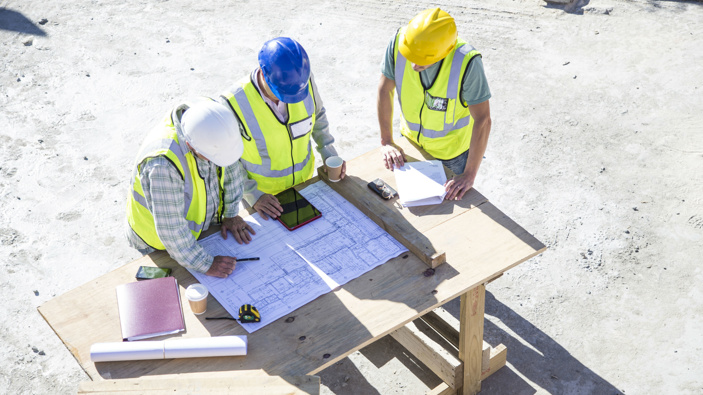Follow
the podcast on


The Government hopes to give a much-needed boost to the building and construction industry with the announcement of $413 million worth of accelerated school infrastructure projects. This follows a raft of school property announcements and the establishment of a new school property agency in July to oversee the planning, building, and maintenance of new school buildings.
Hopefully, there will be some opposition input into this new agency, some opposition oversight. Because back in 2019, Jacinda Ardern and Chris Hipkins, surrounded by adoring children, announced funding of $1.2 billion over four years for school property – a new primary school, 200 new classrooms in Auckland amongst them. The new buildings would be needed for the estimated 100,000 extra students who will enter the school system over the next 10 years. So far, so good.
At the time, Ms Ardern said there were too many kids getting taught in cold school halls and prefabs, and our plan, she said, will turn that around. It's important we plan ahead for growth, so parents can be confident they can send their child to their local school, and their local school will have enough warm, dry and modern classrooms to learn in, something the previous government failed to do.
Then they were voted out in 2023 and in came National, and the next year the Education Ministry put hundreds of projects on hold. Now, why would they do that? Obviously, there are more young people who are going to need classrooms, schools are already overcrowded. There are children being taught in halls and prefabs that are less than ideal.
Well, they did that because Labour had absolutely no concept of fiscal control. Their idea of building new classrooms was to go to a groovy young architect and say, "Come up with something fabulous," and they did. Groovy young architects have got amazing ideas and visions, and they can help children reach their full potential and development with the kind of environment that they can create with an unlimited chequebook.
So, in came boring, grumpy old National. Hundreds of projects went on hold and $2 billion was saved, they say. The value for money review considered 352 projects at 305 schools with a combined estimated cost of $4.6 billion. It decided 110 projects would go ahead with changes such as removing non-essential aspects of the build or using off-the-shelf rather than bespoke design.
If you are going to have an agency that's going to look ahead and plan and build and maintain school buildings, you've all got to be on the same page. Otherwise, what is the point? It makes sense to plan ahead for the future. It makes sense to build new schools where they're needed and to build new classrooms. But not if they're going to be, oh, I don't know, a vision came to me and I just drew something on paper and then it's like, you know, my ancestors are speaking to me and all of a sudden I've got this amazing creation for the cost of a billion dollars.
If you could have three schools built for the same amount of money, then that's the way you go. We go for bespoke award-winning design buildings when we are an oil-rich nation who just doesn't know what to do with its money. What will we do? Oh, I know. We'll give gorgeous young architects, brilliant young things, the opportunity to use their talents and create amazing public buildings. This is a good thing if you can afford it, and we cannot.
Do school buildings really need to be architecturally designed and award-winning buildings? I would argue right now they don't. They're beautiful and they're clever, but that level of expense is not necessary.
It's the same with social housing. We all know Kāinga Ora was given a mandate under the last government to build houses at whatever cost, and away they went. Architecturally designed, beautifully appointed housing communities, which again is all very well and good if you can afford it. But the triumph of ideology over pragmatism saw Kāinga Ora completely blow its budget, leading to debt for generations of taxpayers to pay back. And again, housing projects were stalled while evaluations were made by those with fiscal discipline, who did the sums to see whether Kāinga Ora was giving value for the money spent.
And again, this was necessary, but in the meantime, the construction industry who'd been working overtime, all of a sudden were told everything that they were working on or intended to be working on was on hold, while boring, sensible people did the sums. They had to down tools, and what do you do if there's no work? You go where the work is. They can't wait. It's a nightmare. Yes, we do need infrastructure built, but surely not award-winning designer infrastructure built at any cost.
And what was the Infrastructure Commission doing while all this, ‘I have a vision’ stuff was going on? The Infrastructure Commission, Te Waihanga, was created in 2018. So presumably they saw this vision for Kāinga Ora, they saw the vision for the schools. I mean, why weren't they saying, "Hang on a minute. For that amount of money, we could get three times the value. Put the brakes on. Taihoa. Let's look ahead for 20 years down the track and see what we can get for that money. It's our money that's being wasted and wasted, and it's not being spent wisely.
We need schools, we need hospitals, we need roads. These are beyond party politics. The leaders of the parties need to knock their heads together and come up with a plan to give to us, to say, "This is how we'll be spending your money, wisely, prudently, and looking ahead to the years to come."
The leaders of the parties need to get together and say to the construction industry, "We can guarantee there will be this work for the next 20 years because this is what we need. It's not that hard. This is what we need for the planned population growth. Here is where we'll be building it. These are the designs, and we've all got certainty for the next 20 years. How bloody hard can it be?"
Take your Radio, Podcasts and Music with you









